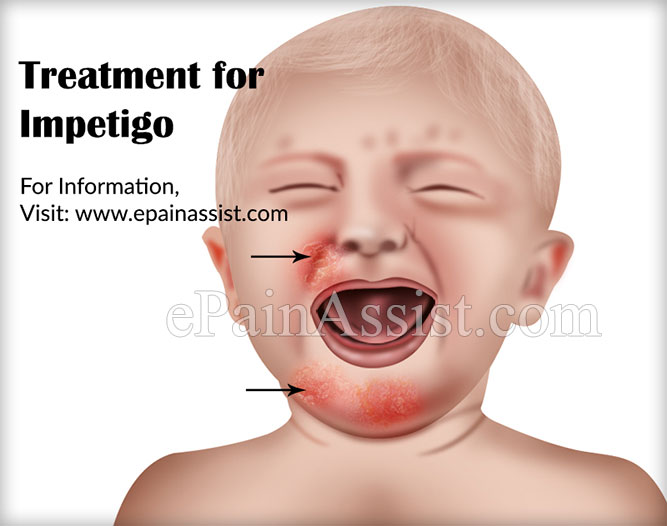Impetigo is a skin infection which is extremely contagious and affects primarily children and infants. Impetigo is characterized by red sores on the face, especially around the nose and mouth. These sores later burst and form honey-colored crusts. The affected child should be kept away from others for about 24-to 48 hours after starting treatment after which the child will no longer be contagious. Without treatment, the child remains contagious until the sores resolve on their own.
Antibiotics are the main line of treatment. Impetigo can also resolve on its own in a couple of weeks, but antibiotics help in decreasing the duration of the disease and helps in preventing its spread to others.
Causes of Impetigo
The cause of impetigo is bacteria, which gets transmitted from an infected person, through contact with sores of some other child who has impetigo or from touching things like clothing, towels, toys, bed linen etc. of the patient.
Risk Factors of Impetigo
- Impetigo commonly occurs in children between the ages of 2 to 6.
- It can be transmitted more easily in crowded settings like day care and schools.
- Impetigo is more common in warm and humid weather.
- Sports which involve skin-to-skin contact, like wrestling and football increases the risk of having impetigo.
- Injures to the skin makes a person more vulnerable to any type of skin infection including impetigo, as the bacteria can enter the skin through a skin injury, rash or insect bite.
- Aged individuals and those who have medical condition like diabetes or have a weak immune system are at a higher risk for developing a more deeper and serious form of impetigo, which is known as Ecthyma.
Signs and Symptoms of Impetigo
- Appearance of red sores which rupture quickly.
- They ooze for some days.
- After that they form a yellowish-brown or honey colored crust.
- These sores commonly develop around the nose and mouth. However, they can spread to other parts of body by fingers, towels, clothing etc.
- Bullous impetigo is another type of impetigo which is less common. It is characterized by larger sized sores/blisters, which develop on the trunk or diaper region of young children and infants.
- Ecthyma is a more serious type of impetigo, which penetrates more deep into the skin and cause pus or fluid-filled blisters, which are painful. These blisters or sores later turn into deep ulcers.
Investigations for Impetigo
Diagnosis can be made by visual inspection, as the sores of impetigo are quite distinctive. Further tests are not usually required. However, further investigations are required if the sores don’t resolve, even after starting antibiotic treatment, where a sample of the fluid oozed by the sore is taken for testing to see which bacteria is responsible and the best antibiotic to use.

Treatment for Impetigo
- Antibiotics are the main line of treatment for impetigo.
- Topical antibiotics in the form of cream or ointment can be applied directly to the sores. The affected region must be soaked in warm water first to remove the overlying scabs. Alternatively wet compresses can also be used for this purpose.
- Oral antibiotics are given for more severe impetigo where the patient has more number of sores
- It is important to finish the complete the entire course of antibiotics even after the sores have resolved in order to prevent recurrence and to reduce the chances of resistance to antibiotics.
Home Remedies and Prevention for Impetigo
- Over-the-counter antibiotic ointment/cream, which has bacitracin, can be used for mild sores.
- Application of nonstick bandage over the affected region helps in preventing spreading of the sores.
- Always keep your skin clean and treat any skin injuries, cuts, insect bites, scrapes etc. immediately.
- If there is a patient in the family who is suffering from impetigo, then follow these precautions to prevent the infection from spreading to other people:
- Wash the affected region with mild soap and water and apply gauze over it.
- Always wear gloves when you are applying medicine and wash hands afterwards.
- Daily make sure to wash the patient’s towels and linens and do not let others use them.
- Always be sure to trim the patient’s nails to prevent from scratching.
- Keep the patient isolated and away from others till the child is no longer contagious.

